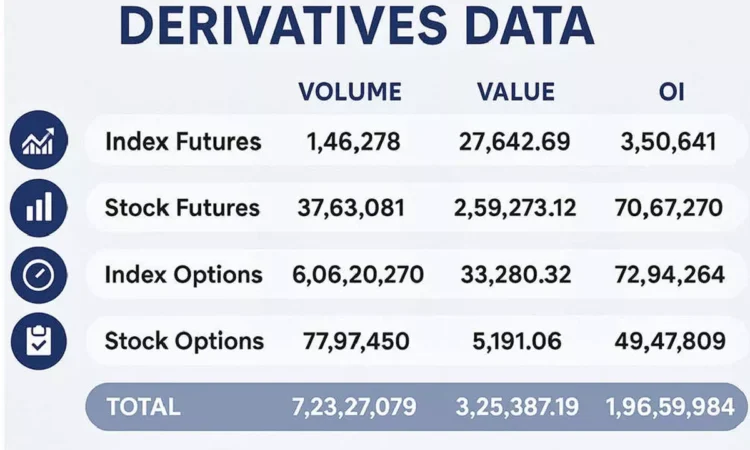The resistance level has increased slightly by 350 points to 25,000 CE, while the support level has decreased by 600 points to 24,000 PE, indicating a broader trading range for the upcoming week. Additionally, the rise in Implied Volatility (IV) compared to the previous week suggests notable price fluctuations. The 25,000 CE has the highest Call OI, followed by the 25,100, 25,500, 25,200, 24,900, 25,400, and 25,800 strikes, with significant Call OI build-up at the 25,000, 24,900, 25,100, 25,200, 25,400, and 25,500 strikes, and no major decline in Call OI observed. On the Put side, maximum Put OI is seen at 24,000 PE, followed by 23,800, 24,200, 24,300, 24,700, 25,000, 24,900, 25,100, and 25,200, with moderate to heavy Put OI.
Reasonable additions of Put OI were noted at the 24,900, 24,400, 23,800, 22,600, and 23,800 strikes, while a slight decline in Put OI is seen from the 25,000 PE ITM strikes inward. Dhirender Singh Bisht, associate vice-president (technical research-equity) at SMC Global Securities Ltd, noted that in the derivatives market, significant Call OI for Nifty is observed at the 25,000 and 25,100 strikes, with notable Put OI at the 25,000 and 24,800 strikes. The 25,000 level will be critical for Nifty, as it holds psychological importance. A sustained move above this level might lead to further upward momentum. For Bank Nifty, significant call open interest was seen at the 56,000 strike, alongside marginal put open interest at the 55,000 strike.
A short build-up in BSE, RVNL, HFCL, and Indigo highlights bearish sentiment, as price declines coincide with increasing OI, suggesting that traders are establishing new short positions. Nifty rose nearly one percent this week, whereas Bank Nifty lagged, dropping 0.35 percent on the weekly charts. Market sentiment remained optimistic, bolstered by GST reforms and JP Morgan’s ‘overweight’ rating on Reliance. Among sectors, auto, consumer durables, and realty led the gains, while PSU, defense, and PSU banks underperformed. For the week ending August 22, 2025, BSE Sensex closed at 81,306.85 points, a net recovery of 709.19 points or 0.87 percent from the previous week’s close of 80,597.66 points.
Similarly, NSE Nifty rebounded by 238.80 points or 0.96 percent to 24,870.10 points from 24,631.30 points a week earlier. India VIX rose by 2.86 percent to 11.70. Implied Volatility for Nifty’s Call options settled at 9.93 percent, while Put options concluded at 10.77 percent. The India VIX, a key market volatility indicator, ended the week at 11.37 percent, with the Put-Call Ratio of Open Interest standing at 1.00. Bisht forecasts that although Nifty lost most of its weekly gains on the last trading day, it remains above its long-term exponential moving averages. Immediate resistance is at 25,000, and a close above could push it toward 25,200–25,300.
Conversely, support is at 24,800, with a break below potentially extending the decline to 24,500. Traders should monitor these critical levels closely before taking positions. Elevated short positions by FIIs persisted despite last week’s recovery, with net shorts in index futures decreasing from 182,000 to 168,000 contracts over the last couple of sessions. Both Nifty and Bank Nifty have seen an addition of short positions, as reported by ICICIdirect.com. Futures positions in the options segment were also negative. Bank Nifty closed the week at 55,149.40 points, up 192.45 or 0.34 percent from the previous week’s close of 55,341.85 points.


